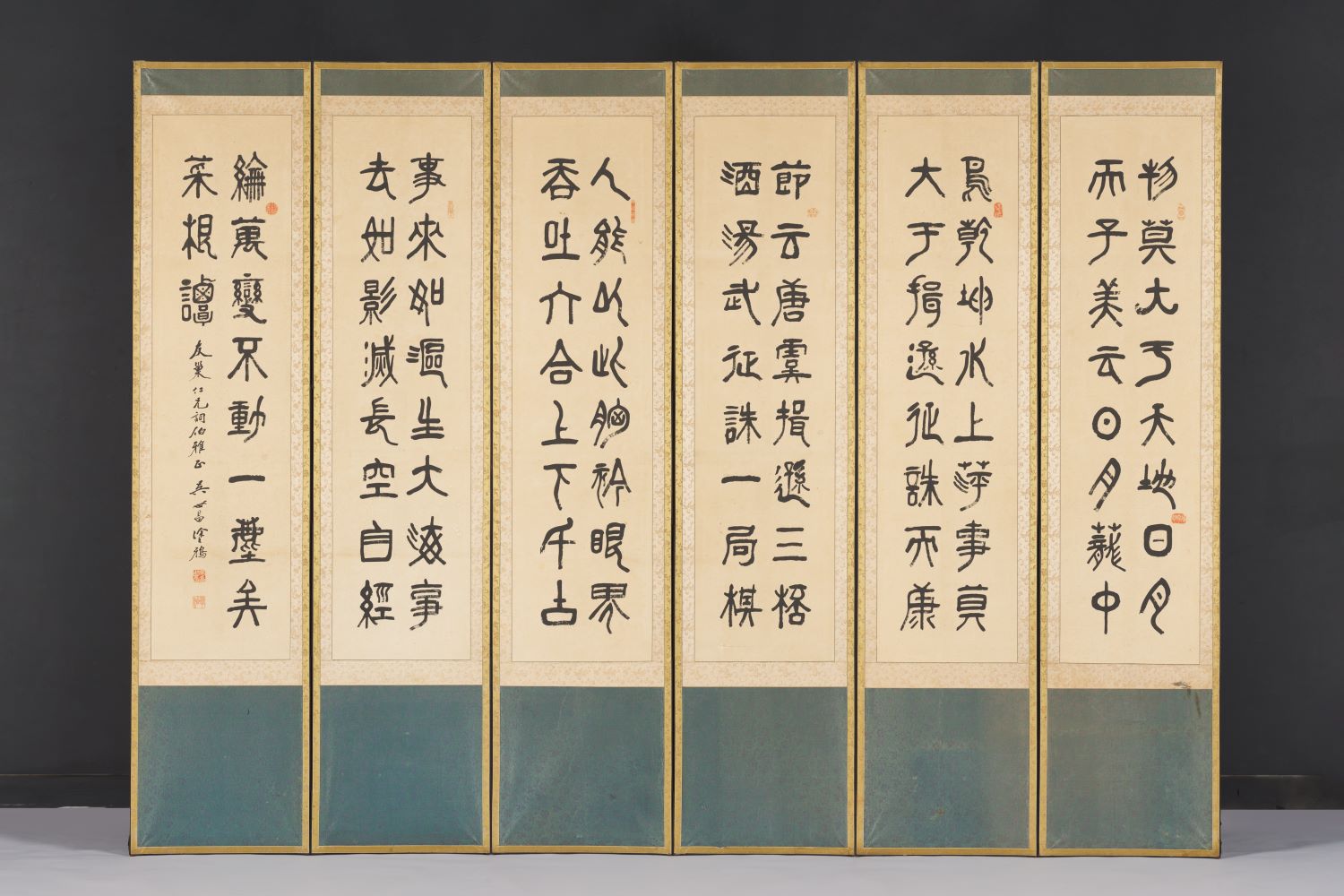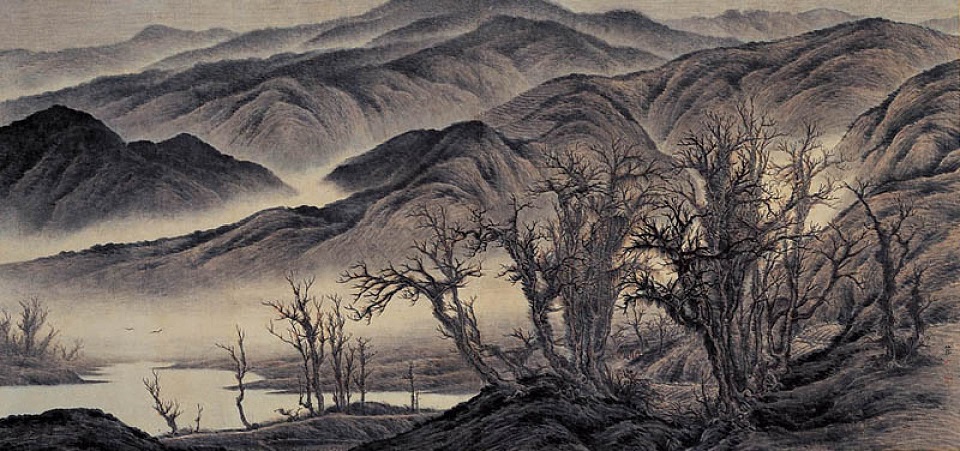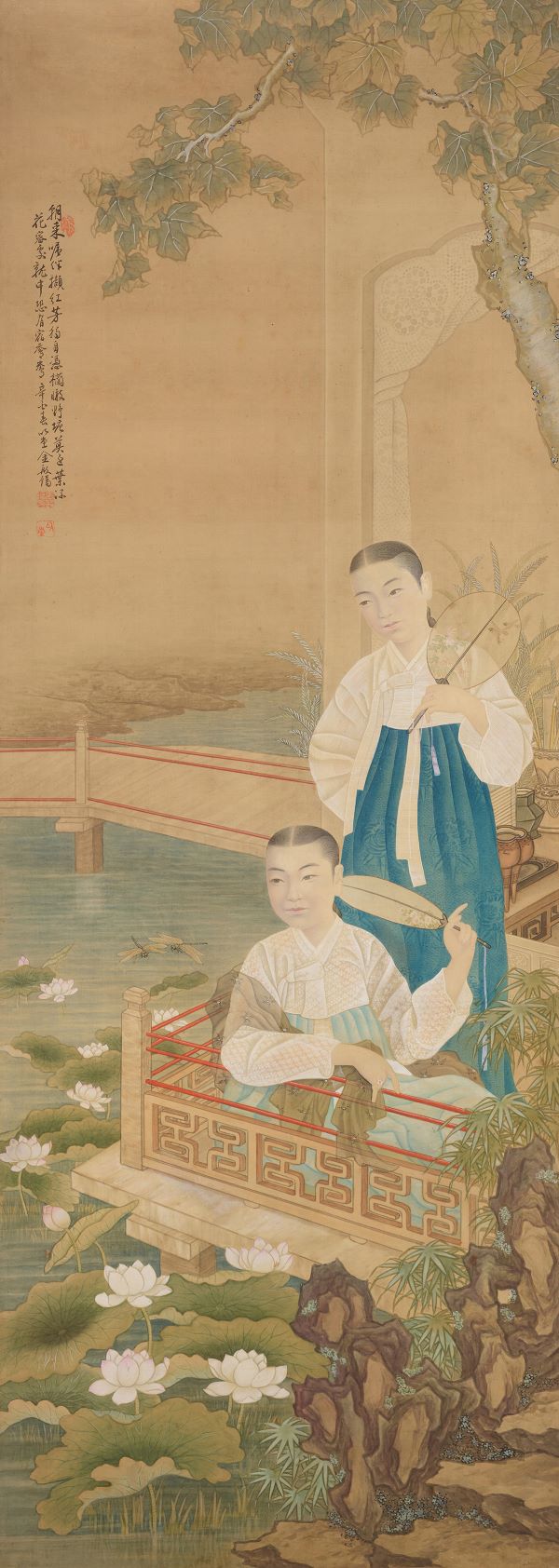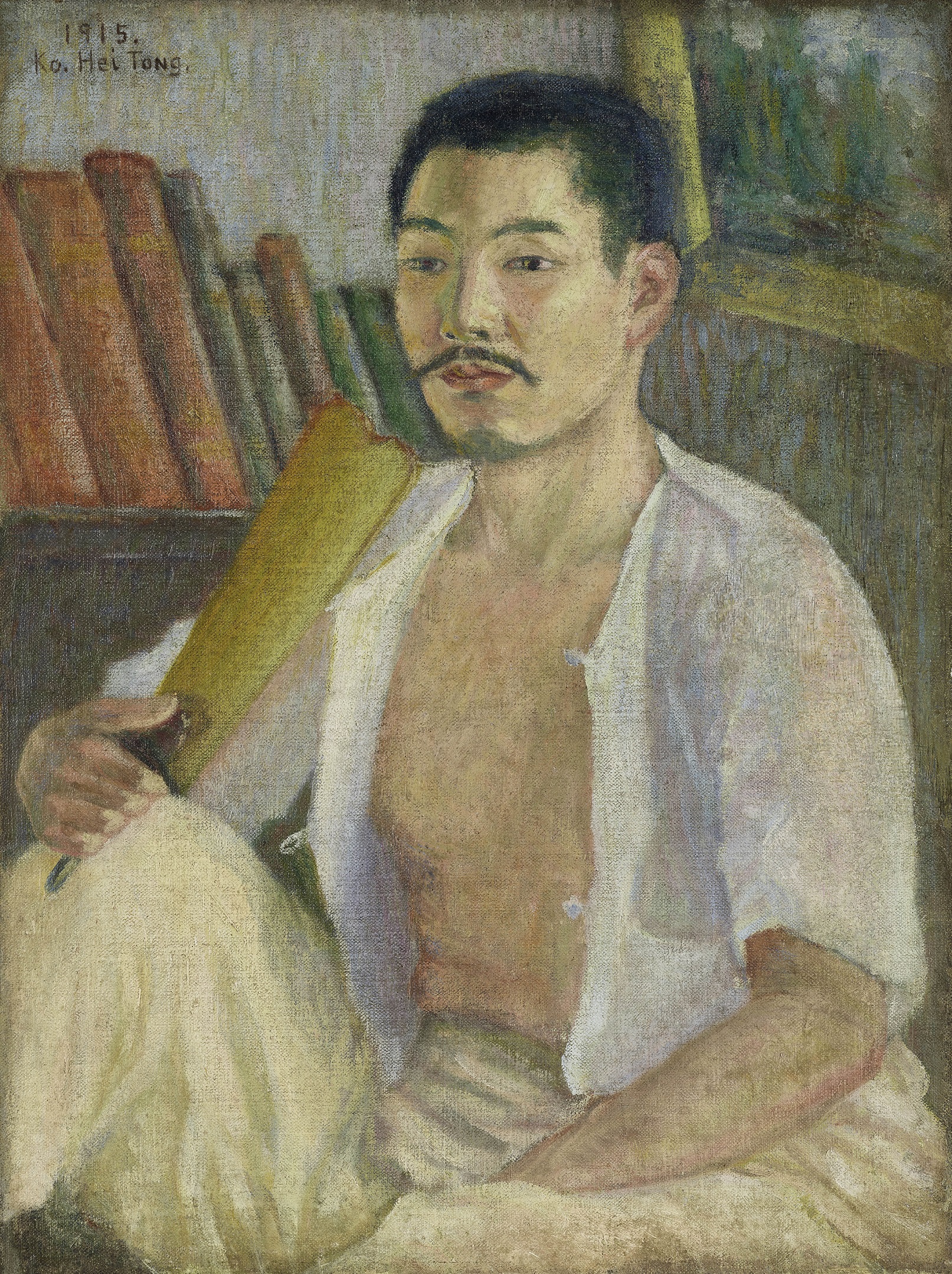
Oh Sechang's Calligraphy: A 6-Panel Folding Screen, 131x204cm (6). National Museum of Korea Collection
Oh Sechang
* Source: MMCA
Related
-

Korean Calligraphy and Painting Association of Peers
An association formed by calligraphers and artists in September 1945, with the calligrapher Son Jaehyeong as chairman. The stated goal of the association was “to become one of the pillars on which to build a nation upon, and to contribute to national culture through social activism.” The association held the first Korean Painters and Calligraphers Exhibition at the Dong Hwa Gallery in April 1946. The second Joseon Painters and Calligraphers Exhibition was held at the Deoksugung Museum of Art in November 1948. Its membership comprised 60 artists including Oh Sechang, Kim Yongjin, An Jongwon, Kim Eunho, No Soohyeon, Lee Ungno, and Lee Sangbeom. Son Jaehyeong, the chairman, was a student of Kim Donhee, a celebrated calligrapher and four-time president of the Calligraphy and Painting Association [Seohwa hyeophoe]; and he served as a panel judge for the Joseon Art Exhibition during the Japanese colonial rule of Korea and once again for the Korean Art Exhibition after independence. He was a leading figure in the field of Korean calligraphy in the 20th century.
-

No Soohyun
No Soohyeon (1899-1979, pen name Shimsan) learned painting from An Jungsik and Cho Seokjin at the Calligraphy and Painting Society (Seohwa misulhoe) and graduated in 1918. In 1920, he participated in a series of decorative paintings at Changdeokgung Palace, and the resulting mural of Joilseongwando is his work. In 1923, he co-founded the art group Dongyeonsa with Lee Yongwoo, Lee Sangbeom, and Byeon Gwansik. Even though this group attempted to explore new, non-traditional possibilities for Eastern painting, their association did not last long. During the 1920s, he participated in the Joseon Art Exhibition [Joseon misul jeollamhoe] and was the first artist to contribute editorial cartoons to the Choson Ilbo from 1924 to 1927. In the 1930s, he stopped participating in the Joseon Art Exhibition. Instead, he dedicated himself to exploring landscape painting based on his real experience of scenery and later established a new landscape painting style that incorporated the motif of oddly formed rocks and strangely shaped stones. Mountain Village (1956), Gyesanjeongchwi (Atmosphere of Valley and Mountain) (1957), Hongyeam (1961), and Paradise (1968) are considered his most representative works. He served as a judge and editorial board member of the National Art Exhibition and educated a variety of contemporary Eastern-style painters as an art professor at Seoul National University.
-

Kim Eunho
Kim Eunho (1892-1979, pen name Yidang) joined the Calligraphy and Painting Society (Seohwa misulhoe) in 1912 and learned Oriental painting under An Jungsik and Cho Seokjin. He was known for his sophisticated brush strokes and attention to detail. Early in his career he was appointed as a court portrait painter. He produced several portraits of kings from the Joseon dynasty and gained a reputation for his portraits and colored figure paintings. He contributed his works to the first exhibition of the Calligraphy and Painting Association (Seohwa hyeophoe) and the Joseon Art Exhibition. His trainees organized Husohoe in 1936, which contributed enormously to the Modern Oriental Art community in Korea. However, he was accused of pro-Japanese activities due to his overt acquiescence to Japanese Imperialism and his involvement in its wartime propaganda. He tried his hand at ink paintings in the 1950s and experimented with modernized colored landscape painting from the 1960s into his later years. In the 1960s, he painted several portraits of historic figures and published Hwadanilgyeong (1968) and Seohwabaeknyeon (1977).
Find More
-

Ko Yuseop
Ko Yuseop (1905-1944, pen name Uhyeon, nom de plume Geubwoldang) is widely considered the first Korean art historian to receive a Western style tertiary education. He studied Aesthetics and Art History at the department of philosophy, Keijo Imperial University. He served as a director of the Kaesong City Museum from 1933 to 1944. He studied Korean pagodas and Goryeo celadons based on Positivism and Formalism. He was a foundational contributor to the creation of a modern academic Korean history of art that featured Buddhist art and Korean painting. He described the aesthetic consciousness of Korean art as “a great savory flavor” or “technique without technique.” His thoughts strongly influenced later generations of Korean artists. His major books include Goryeo Celadon, Studies on Korean Pagodas, The Collected Volume of Korean Art History, Studies on Korean Art History and Aesthetics, and Historical Sites in Songdo.
-

Ko Huidong
Ko Huidong (1886-1965, pen name Chungok) was born in Seoul and graduated from Hanseong French Language School. He worked as an interpreter and was appointed as a government official of the Korean empire. In 1907, he began to learn painting from An Jungsik and Cho Seokjin. He visited Japan to study art in 1909 and later attended Tokyo School of Fine Arts where he studied oil painting. The advent of Japanese colonization in 1910 caused him to lose his position as a government official and he became a student. He graduated in 1915. A Self-portrait with Jungjakwan (traditional Korean hat for government officials) reflected his self-consciousness of his former role as a government official of the Korean empire. His oil paintings, such as A Self-portrait with Durumagi (traditional Korean overcoat) or A Self-portrait Holding a Fan, are currently owned by the MMCA in Gwacheon. In the 1920s, he stopped creating Western paintings due to the lack of understanding of people around him. After this period, he focused on Eastern paintings depicting subjects such as Geumgangsan Mountain or other nativist landscape themes. He organized the Calligraphy and Painting Association [Seohwa hyeophoe] with An Jungsik, Cho Seokjin, and Lee Doyoung and worked as a secretary of that Association's exhibitions. He was acquainted with numerous other artists and he actively participated in political activism in the modern painter’s circle in Korea. Following the example of his father Ko Yeongcheol, a member of Yukgyo Poetic Gathering [Yukgyo sisa], he also interacted with other artists, such as Oh Sechang. He helped to organise artists as a chair of the Great Korean Art Association [Daehan misul hyeophoe] and later was appointed as a senator. In 1954, He was selected as the first chairman of the National Academy of Arts. His universal significance can be seen in his crucial contribution to the establishment of the first association of Western painting artists and modern artists in Korea.






